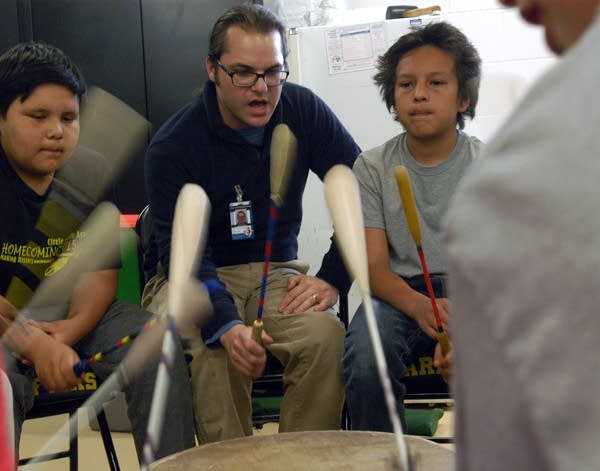White Earth worries loss of state money may cripple school's progress

Ryan Bajan, who was recently hired to teach the culture classes, drums with students, including Kai Chavez, right, on April 20. Sixth-grade students are asked to spend time drumming during their culture class hour.
Vickie Kettlewell for MPR News
Go Deeper.
Create an account or log in to save stories.
Like this?
Thanks for liking this story! We have added it to a list of your favorite stories.


